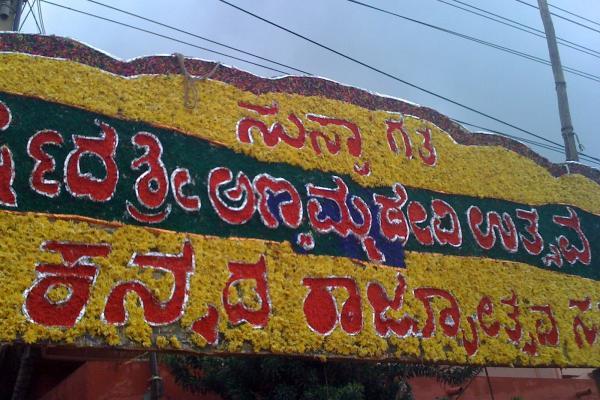
Summary
Wikitravel users have collectively created a free Kannada phrasebook with the goal of making it possible for travelers to "get by" while traveling in areas where Kannada is spoken.
Wikitravel phrasebooks are available in many languages and each one varies in depth and detail. Most of the phrasebooks include a pronunciation guide, a general phrase list, information about dates and numbers, a color list, transportation-related phrases, vocabulary for shopping and phrases for eating and drinking. Some are even more in depth, and all are free!
From Website
Kannada (kannaḍa) [ˈkʌnːəɖa] or Canarese is a Dravidian language and is an official language of India and the state language of Karnataka. It is also the language which you will encounter in Bangalore. It is also the language you will encounter if you visit the historically significant cities of Mysore and Hampi, so arming yourself with rudimentary knowledge of Kannada is a good idea if you wish to visit those places.
Kannada, whose native speakers are called Kannadigas, number roughly 50 million, making it the 27th most spoken language in the world. It is one of the scheduled languages of India and the official and administrative language of the state of Karnataka.
The Kannada language is written using the Kannada script which is evolved from the Kadamba script. Kannada is attested epigraphically from the first millennium AD, and literary Old Kannada flourished in the 6th century Ganga dynasty and during 9th century Rashtrakuta Dynasty.
As a Dravidian language, Kannada belongs to the same family as the other South Indian languages Tamil, Telugu, Malayalam and Tulu. These languages share many words, sentence structures and even expressions, which means that if you pick up any one, your path to learning the others is considerably eased.
Contemporary Kannada literature is the most successful in India, with India's highest literary honor, the Jnanpith awards, having been conferred seven times upon Kannada writers, which is the highest for any language in India. Based on the recommendations of the Committee of Linguistic Experts, appointed by the Ministry of Culture, the Government of India officially recognised Kannada as a classical language.
It is a commonly-held belief that because Kannada is more accepting of Sanskrit loan words, learning conversational Hindi (Hindi language owes most of its vocabulary to Sanskrit) will help you pick up Kannada. This is false. Though Kannada literature has over the years accepted many Sanskrit and Prakrit languages words, the conversational(colloquial) Kannada has very little influence from Sanskrit or any other Indo-european language.
In plain and simple words, knowing conversational Hindi, conversational Marathi or Sanskrit might not help learning/speaking day-to-day conversational Kannada with the native speakers, unless a native speaker to whom you are speaking has prior knowledge of Hindi/Marathi.
Though the Dravidian languages like Telugu and Tamil share lot of words with Kannada, the grammatical structure (colloquial speech) of these languages are quite similar. A person with prior knowledge of conversational Telugu or conversational Tamil may find it easier to learn Kannada. But when it comes to conversing, the pronounciation of Kannada compared to the other Dravidian languages like Tamil and Telugu is quite different, and the words and sentences shared between these sister languages are often mutually unintelligible.
The Kannada script (a Brahmic or Indic script) is an alphasyllabary of the Brahmic family.